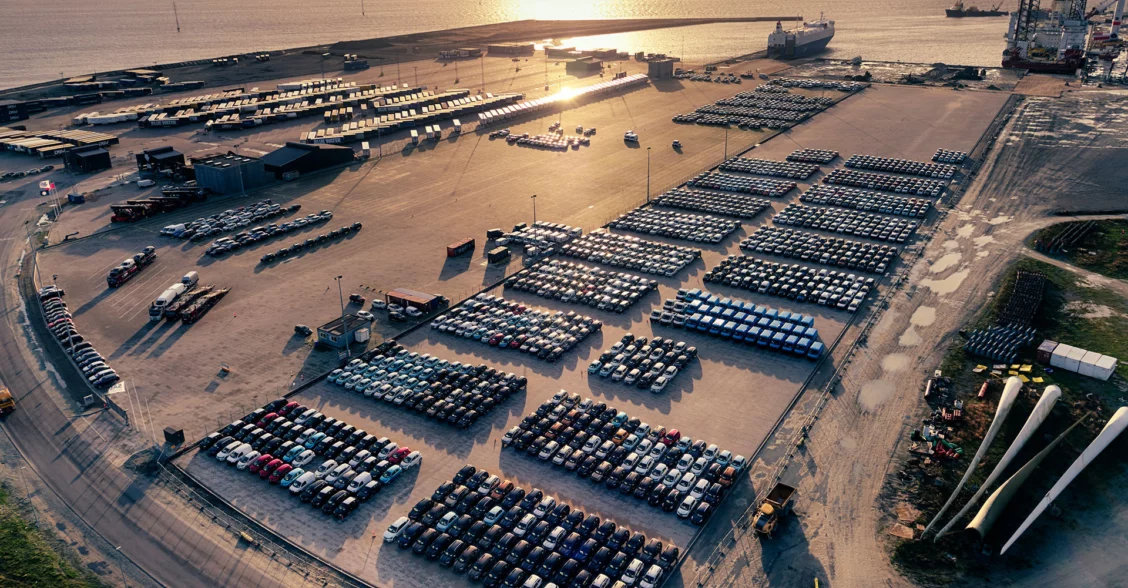The new multi-terminal at Østhavnen is commissioned and already fully booked
This past summer, Port Esbjerg announced that a new multi-terminal was being built in the Østhavnen area at the east end of the port. Now, only five months later, the 40,000 m2 facility is in operation, right on schedule, and it is already fully booked.
The first freight load rolled into the terminal on 3 December. The concrete-tiled surface ensures great flexibility for freight handling. The multi-terminal offers direct access to three RoRo ramps as well as the E20 motorway.
It is also connected to the other two multi-terminals at the port, operated by Blue Water Shipping and Scandinavian Auto Logistics.
The new multi-terminal is part of Port Esbjerg’s contribution to strengthening intermodal traffic in Europe, so more goods can be moved by sea as part of the green transition. It accommodates the increased demand for space to store and from which to ship cars, project cargo, wind turbine components and other goods.
Overall, the new multi-terminal allows for a 50 per cent increase in traffic at the port of Esbjerg. This could become extremely relevant especially if the UK were to leave the EU without a trade agreement. In that event, the people at Port Esbjerg expect more traffic between the UK and Denmark to go through Esbjerg, because it is cheaper to send freight by ship than by road via the southern route.
The multi-terminal represents a DKK 15 million investment, and the completion of the facility was marked at an informal event held for the engineers in charge of the project, customers and Port Esbjerg staff.

The 40,000 m2 facility is in operation, right on schedule, and it is already fully booked.
Seven installation vessels docked at Port Esbjerg
It is a rare sight, but in November there were as many as seven offshore installation vessels docked at Port Esbjerg. The explanation is that many shipping companies choose the port of Esbjerg as the dock to ready their installation vessels for new assignments.
“We’re very flexible in accommodating installation vessels needing to be mobilised or demobilised, so we can almost always comply with requests for quay space in a given period. A great many companies choose Port Esbjerg. We’re able to keep costs down, and shipping companies know that there is always space available for their vessels and that the right skills and expertise are available at the port of Esbjerg,” says Kurt Mathiesen, Port Assistant at Port Esbjerg.
The largest installation vessels can carry six complete offshore wind turbines – that is six towers, six nacelles and 18 blades. Installation vessels are equipped with jack-up legs that can be lowered to the sea floor, lifting the vessel out of the water while the wind turbines are being installed. These vessels are mainly for installing offshore wind turbines, but they can also be used for decommissioning oil/gas structures.

It is a rare sight, but in November there were as many as seven offshore installation vessels docked at Port Esbjerg.
Go to overview

